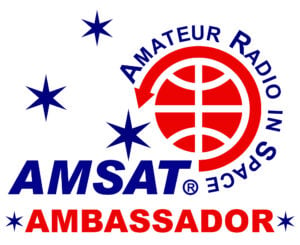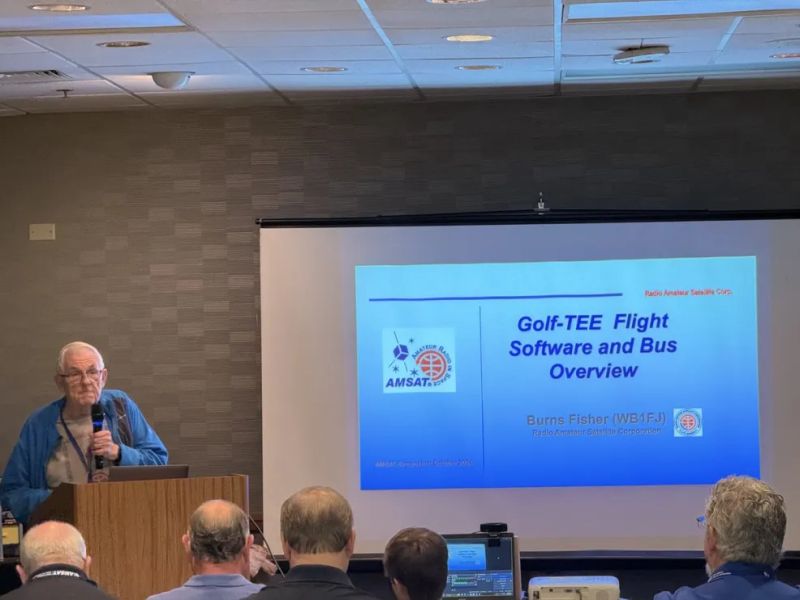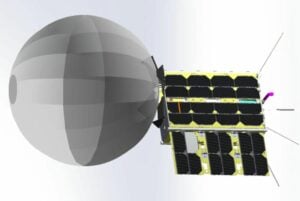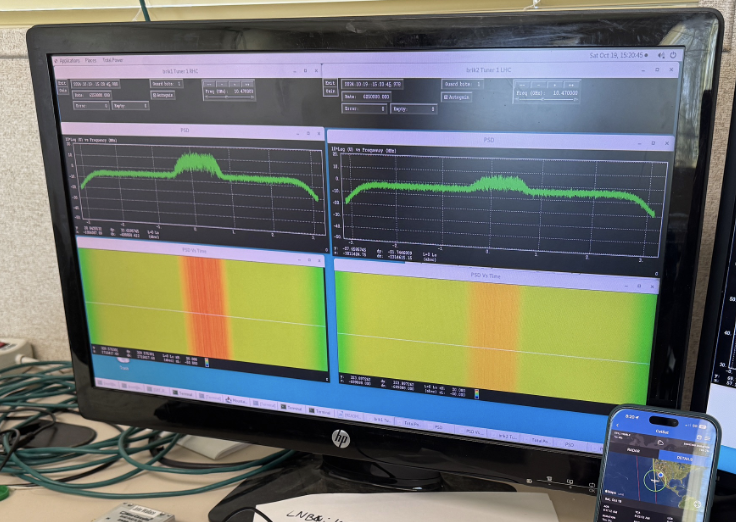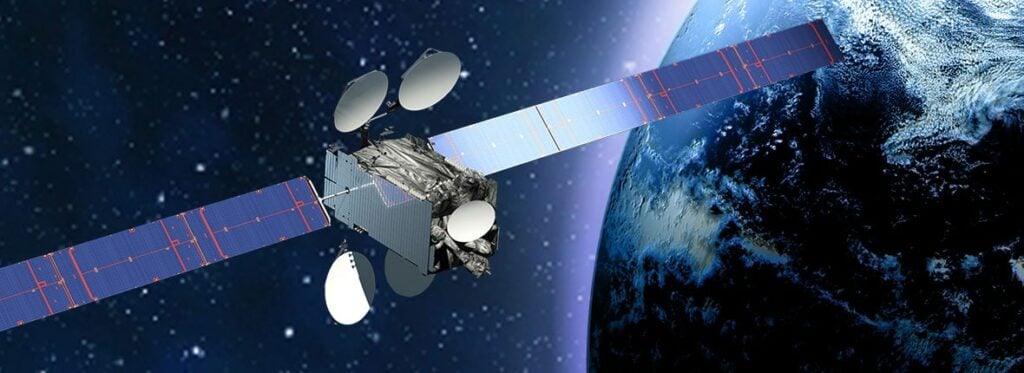AMSAT News Service
ANS-019
January 19, 2025
In this edition:
* SpaceX Launches Hamsats on Rideshare Mission
* Two Private Moon Landers Have Launched at Once
* Blue Origin New Glenn Reaches Orbit on Its First Launch
* SpaceX Success & Failure in Starship Flight 7
* Three U.S. Schools Moved Forward in ARISS Selection Process
* New ARISS Proposal Window is Now Open
* Changes to AMSAT-NA TLE Distribution
* ARISS News
* Upcoming Satellite Operations
* AMSAT Ambassador Activities
* Satellite Shorts From All Over
The AMSAT News Service bulletins are a free, weekly news and information service of AMSAT, the Radio Amateur Satellite Corporation. ANS publishes news related to Amateur Radio in Space including reports on the activities of a worldwide group of Amateur Radio operators who share an active interest in designing, building, launching and communicating through analog and digital Amateur Radio satellites.
The news feed on http://www.amsat.org publishes news of Amateur Radio in Space as soon as our volunteers can post it.
Please send any amateur satellite news or reports to: ans-editor [at] amsat.org
Sign up for free e-mail delivery of the AMSAT News Service Bulletins via the ANS List; to join this list see: https://mailman.amsat.org/postorius/lists/ans.amsat.org/
ANS-019 AMSAT News Service Weekly Bulletins
SpaceX Launches Hamsats on Rideshare Mission
A Falcon 9 rocket carrying 131 different payloads lifted off on the company’s Transporter 12 mission from Vandenberg Space Force Base on January 14 at 19:09z. Included among the payloads were the amateur radio satellites HADES-R, operated by AMSAT-EA in Spain, and PARUS-T1, constructed by National Formosa University of Taiwan, among others.
With so many payloads aboard, not all of the satellites will be released at once. Rather, releases will be spaced over a period of time. At this writing, there is no word yet on the successful deployment of HADES-R. Further, the satellite will undergo several weeks of commissioning before the FM repeater is opened for use.
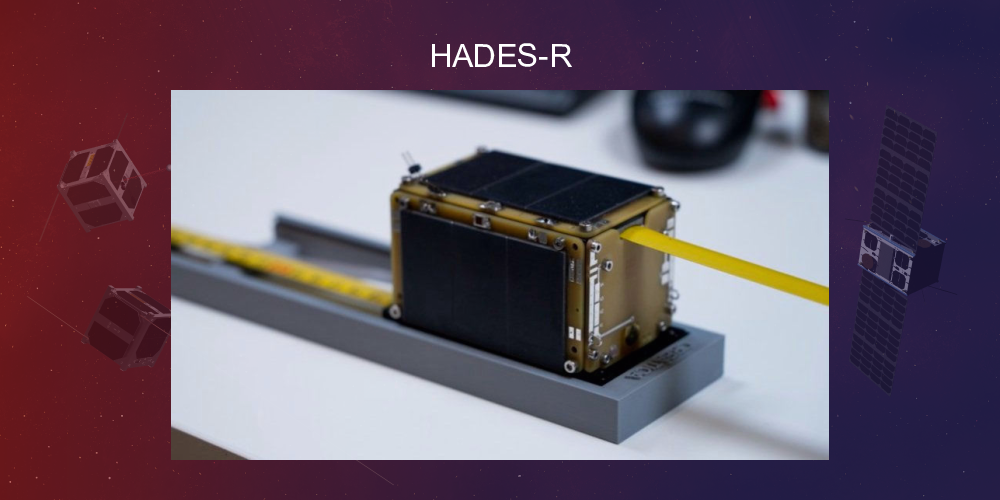
HADES-R has a downlink frequency, coordinated by the International Amateur Radio Union (IARU) of 436.888 MHz. While FM voice is the primary mission, the downlink may sometimes include FSK data up to 1200 bps, APRS up to 1200 bps, FSK telemetry and experimental data up to 1600 bps or CW. The uplink will be 145.925 MHz, Modes: FM voice (without subtone) and FSK 200 bps, AFSK, AX.25, APRS 1200 / 2400 bps.
Also launched on Transporter 12 was PARUS-T1, a 3U CubeSat dedicated to receiving APRS signals on three major global frequencies: 144.640 MHz, 144.390 MHz, and 144.800 MHz. The satellite will record the Received Signal Strength Indicator (RSSI) data for each received APRS packet and utilize a Global Navigation Satellite System (GNSS) receiver to determine the CubeSat’s orbit location during each signal reception. The received APRS data, RSSI values, and corresponding location data will be stored in the On-Board Computer (OBC) memory for transmission to ground stations.

PARUS-T1 satellite [Illustration from Taiwan Space Agency via Taipei Times]
Students will also be extensively involved in mission data analysis and will gain hands-on experience in understanding ionospheric propagation and its impact on terrestrial and satellite radio communications. The beacon packets shall not be encrypted and made public to the community via websites. Community participation will be encouraged through online leaderboards for example SatNOGS network. Data format of PARUS-T1 health telemetry and payload raw data will also be published and welcome all amateurs to receive 436.850MHz for packet data of AX.25 protocol on 1200bps.
PARUS-T1 also has an APRS digipeater to provide global amateur activities at the same frequency of ISS APRS channel 145.825 MHz.
A list of amateur radio payloads launched on the rideshare appears below:
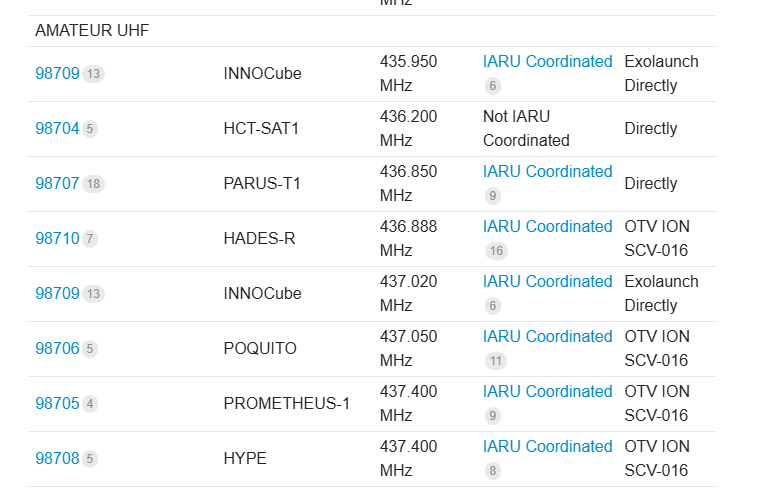
[Libre Space graphic]
Thirty-seven of the 131 payloads going up today belong to San Francisco company Planet, which operates three constellations of Earth-observing satellites. Thirty-six of the 37 Planet craft are “SuperDove” cubesats, shoebox-sized craft that collect images with a resolution of about 10 feet (3 meters) per pixel. The other one is Pelican-2, whose resolution is about 7.5 times sharper than that.
SpaceX has launched a total of 13 rideshare missions to date — the 11 Transporter flights and two in a different program known as Bandwagon. Together, these missions have lofted about 1,100 payloads for more than 130 different customers, according to the Transporter 12 description.
[ANS thanks Space.com, AMSAT-EA, and IARU for the above information]
The 2025 AMSAT President’s Club Coins Have Just Arrived!
Celebrating the 40th Anniversary of Amateur Radio on Human Spaceflight
Help Support GOLF and Fox Plus.
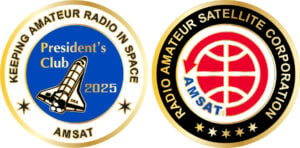
Join the AMSAT President’s Club today and help
Keep Amateur Radio in Space!
https://www.amsat.org/join-the-amsat-presidents-club/
Two Private Moon Landers Have Launched at Once
A space twofer took place early Wednesday morning — two lunar missions for the price of one rocket launch.
A SpaceX Falcon 9 lifted off from the NASA’s Kennedy Space Center in Florida at 1:11 a.m. Eastern time, carrying the Blue Ghost lander built by Firefly Aerospace of Austin, Texas, and the Resilience lander from Ispace of Japan.
Why did two moon landers share one rocket? That was the result of fortuitous scheduling by SpaceX and not something that was planned by Firefly or Ispace.
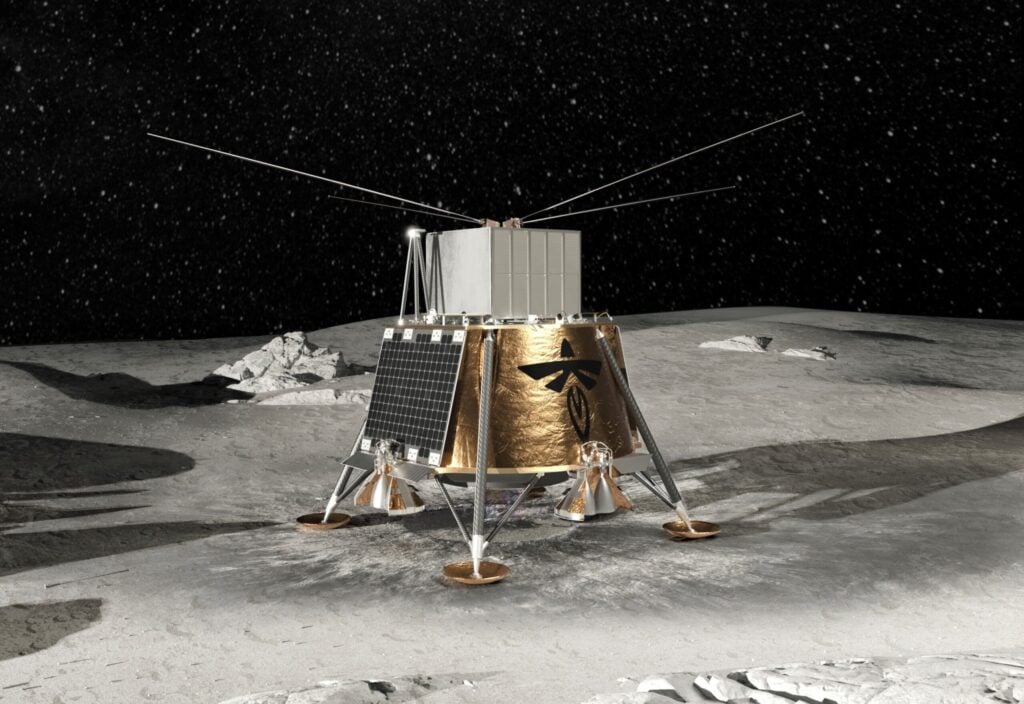
Firefly had purchased a Falcon 9 launch to send its Blue Ghost lander to the moon. At the same time, Ispace, to save on the costs for the mission, had asked SpaceX for a rideshare, that is, hitching a ride as a secondary payload on a rocket launch that was going roughly in the right direction to get its Resilience lander to the moon. That turned out to be Blue Ghost’s trip.
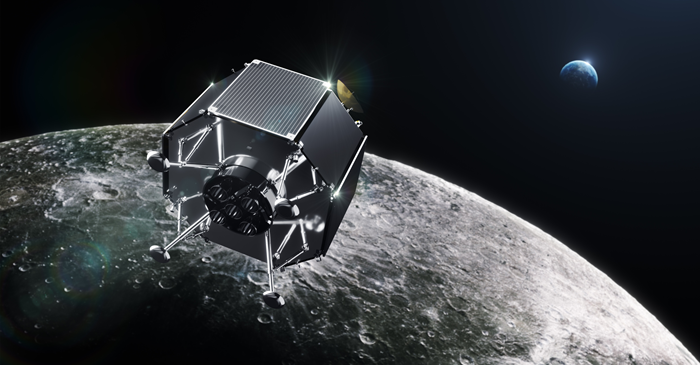
“It was a no-brainer to put them together,” Julianna Scheiman, the director for NASA science missions at SpaceX, said during a news conference on Tuesday.
After the Falcon 9 rocket reached orbit, the second stage fired again for a minute so it could deploy Blue Ghost in an elliptical orbit around Earth, about an hour after launch. The rocket stage fired once more, for just a second, to adjust the orbit for the deployment of Resilience, about 1.5 hours after launch.
On Wednesday morning, Firefly and Ispace announced that their spacecraft successfully turned on, established communications with ground stations on Earth and were operating as expected.
According to AMSAT-DL, the German amateur satellite organization, the Firefly_Space Blue Ghost Mission includes the Lunar GNSS Receiver Experiment (LuGRE) with the goal of demonstrating GNSS-based positioning, navigation, and timing at the Moon. LuGRE will build on the legacy of prior missions in the Space Service Volume (SSV) including the initial experiments by AMSAT on OSCAR-40 (P3-D) satellite and others.
Read the full story of the launch at https://bit.ly/4fYhCpV [may have pay wall]. More information on the LuGRE payload is at https://way4ward.eu/services/lugre/.
[ANS thanks Kenneth Chang of The New York Times and AMSAT-DL for the above information]
Need new satellite antennas?
Purchase M2 LEO-Packs from the AMSAT Store.
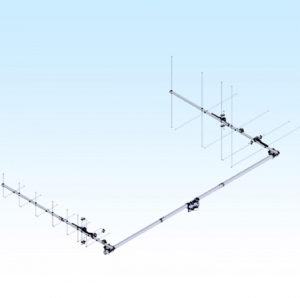 When you purchase through AMSAT, a portion of the proceeds goes towards
When you purchase through AMSAT, a portion of the proceeds goes towards
Keeping Amateur Radio in Space.
https://amsat.org/product-category/hardware/
Blue Origin New Glenn Reaches Orbit on Its First Launch
Blue Origin entered into the history books in the predawn hours of Thursday, January 16. The company, founded by Jeff Bezos, became the first to successfully reach orbit on their first launch with a new orbital-class rocket in the new era of commercial spaceflight that dawned in the last two decades.
After dealing with an unplanned hold to chill its engines and a wayward boat entering the keep out zone, the New Glenn rocket, standing as tall as a 32-story building, lumbered off the pad under the power of 3.9 million pounds of thrust.
The seven BE-4 engines on the first stage booster roared to life at 2:03 a.m. EST (07:03 UTC) shining a brilliant orange that turned to blue as the liquified natural gas (LNG) fueled rocket began its journey from pad 36 at Cape Canaveral Space Force Station.

Blue Origin’s New Glenn rocket lifts off the pad for the first time at Launch Complex 36 at Cape Canaveral Space Force Station. [Image: Pete Carstens/MaxQ Productions for Spaceflight Now]
Blue Origin dealt with multiple weather-related delays to get to launch day and even during the countdown, faced uncertain skies that threatened to potentially delay the mission yet again.
It also ran into technical issues on its way to launch. Blue Origin said an issue that prevented Monday’s launch was “ice forming in a purge line on an auxiliary power unit that powers some of [New Glenn’s] hydraulic systems.” Teams worked to clear that issue during the three-hour window, but weren’t able to do so in time.
One of the goals of the NG-1 mission was to attempt to land the first stage booster, named ‘So You’re Telling Me There’s a Chance,’ on Blue Origin’s landing vessel, named ‘Jacklyn,’ which was positioned out in the Atlantic Ocean.
Ultimately, it was determined that the touchdown on the 380-foot-long (116 m) landing vessel, named ‘Jacklyn,’ was unsuccessful. That said, going into the launch, Blue Origin said repeatedly that landing the booster was an aspirational goal and not their main objective.
Read the complete story at https://bit.ly/3CcTSRa
[ANS thanks Spaceflight Now for the above information]
SpaceX Success & Failure in Starship Flight 7
SpaceX’s seventh flight of its Starship rocket was a combination of great success and catastrophic loss, with a catch of its Super Heavy booster at the launch tower and the failure of the Starship upper stage as it climbed to space.
Beginning around seven minutes and 40 seconds into the flight, SpaceX’s on-screen telemetry data began to show one Raptor engine after another turn off on the Ship until the telemetry froze at eight minutes and 27 seconds.
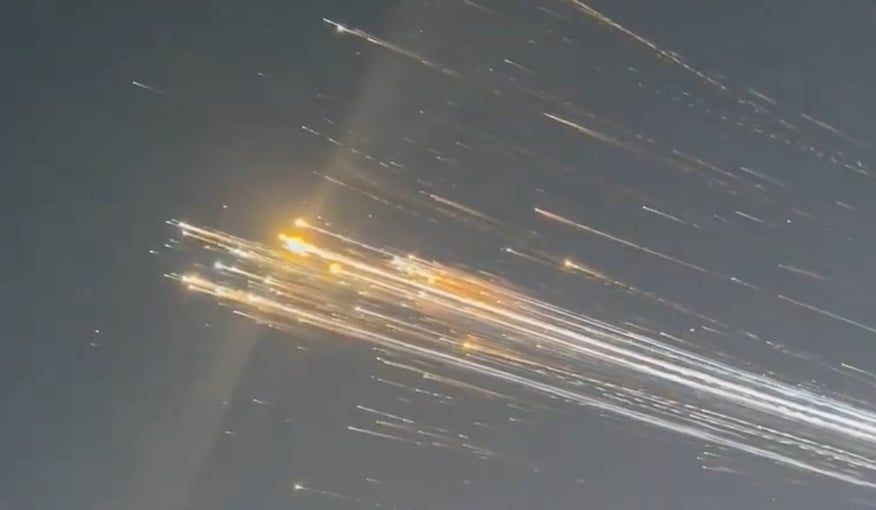
A still image taken from video of what is reportedly the remnants of SpaceX’s Starship upper stage as seen from the vantage point of the Turks and Caicos Islands. [Image: Alex Davenport and Spaceflight Now.]
The launch began nominally, with the more than 400-foot-tall rocket lumbering off of the pad at 22:37 UTC on Thursday, Jan. 16. The mission featured the first flight of the Block 2 variant of the upper stage.
The 33 Raptor engines on the booster powered it down range as expected and beginning about two minutes and 30 seconds into the mission, most of them cut off and the six Raptor engines on the Ship sprang to life to begin carrying it towards space.
The booster performed a flip maneuver and another burn to put it on a course towards the launch tower. The Super Heavy booster, B14, performed a final landing burn about 6 minutes and 30 seconds after liftoff and before seven minutes were up, it was caught by the tower.
Read the full story, with videos, at https://bit.ly/3WjAXLu
[ANS thanks Spaceflight Now for the above information.]
Three U.S. Schools Moved Forward in ARISS Selection Process
Amateur Radio on the International Space Station (ARISS) is pleased to announce the U.S. schools/host organizations newly selected for 2025 ARISS contacts. A total of three of the submitted proposals during the recent proposal window have been accepted to move forward in the processes of planning to host a scheduled amateur radio contact with crew on the ISS. The primary goal of the ARISS program is to engage young people in Science, Technology, Engineering, Arts and Math (STEAM) activities and raise their awareness of space communications, radio communications, space exploration, and related areas of study and career possibilities.
The ARISS program anticipates that NASA will be able to provide scheduling opportunities for the 3 US host organizations during the July – December 2025 time period. They are now at work starting to implement their 4–6-month education plan which was outlined in their proposal. These STEAM based educational activities help prepare students for their contact as well as create an on-going exploration and interest in aerospace and amateur radio topics. They are also completing an acceptable equipment plan that demonstrates their ability to execute the ham radio contact. Once their equipment plan is approved by ARISS, the final selected schools/organizations will be scheduled as their availability and flexibility match up with the scheduling opportunities offered by NASA.
The schools and host organizations are:
- Paterson P-Tech High School, Paterson, NJ
- Pinecrest Academy, Cumming, GA
- Terre Haute Children’s Museum, Terre Haute, IN
[ANS thanks ARISS for the above information]
New ARISS Proposal Window is Now Open
The Amateur Radio on the International Space Station (ARISS) Program is seeking formal and informal education institutions and organizations, individually or working together, to host an Amateur Radio contact with a crew member on board the ISS. ARISS anticipates that the contact would be held between July 1, 2025 and December 31, 2025. Crew scheduling and ISS orbits will determine the exact contact dates. To maximize these radio contact opportunities, ARISS is looking for organizations that will draw large numbers of participants and integrate the contact into a well-developed education plan.
The deadline to submit a proposal is February 28, 2025. Proposal information and more details such as expectations, proposal guidelines and the proposal form can be found at www.ariss.org. An ARISS Introductory Webinar session will be held on January 22 at 8 p.m. EST. The Zoom link to sign up is: https://us06web.zoom.us/meeting/register/kznKuyHCRyKi8_j00JBd_g
The Opportunity
Crew members aboard the International Space Station will participate in scheduled Amateur Radio contacts. These radio contacts are approximately 10 minutes in length and allow students to interact with the astronauts through a question-and-answer session.
An ARISS contact is a voice-only communication opportunity via Amateur Radio between astronauts and cosmonauts aboard the space station and classrooms and communities. ARISS contacts afford education audiences the opportunity to learn firsthand from astronauts what it is like to live and work in space and to learn about space research conducted on the ISS. Students also will have an opportunity to learn about satellite communication, wireless technology, and radio science. Because of the nature of human spaceflight and the complexity of scheduling activities aboard the ISS, organizations must demonstrate flexibility to accommodate changes in dates and times of the radio contact.
Amateur Radio organizations around the world with the support of NASA and space agencies in Canada, Japan, Europe and Russia present educational organizations with this opportunity. The ham radio organizations’ volunteer efforts provide the equipment and operational support to enable communication between crew on the ISS and students around the world using Amateur Radio.
Please direct any questions to [email protected] .
[ANS thanks ARISS for the above information]
Want to fly the colors on your own grid expedition?
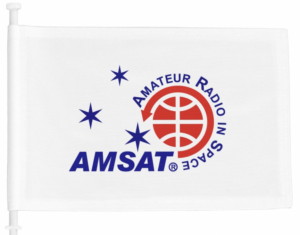
Get your AMSAT car flag and other neat stuff from our Zazzle store!
25% of the purchase price of each product goes towards
Keeping Amateur Radio in Space
https://www.zazzle.com/amsat_gear
Changes to AMSAT-NA TLE Distribution for Jan. 17
Two Line Elements or TLEs, often referred to as Keplerian elements or keps in the amateur community, are the inputs to the SGP4 standard mathematical model of spacecraft orbits used by most amateur tracking programs. Weekly updates are completely adequate for most amateur satellites. TLE bulletin files are updated daily in the first hour of the UTC day. New bulletin files will be posted immediately after reliable elements become available for new amateur satellites. More information may be found at https://www.amsat.org/keplerian-elements-resources/.
This week there are no additions or deletions to the AMSAT TLE distribution.
[ANS thanks Joe Fitzgerald, KM1P, AMSAT Orbital Elements Manager for the above information]
ARISS NEWS
Amateurs and others around the world may listen in on contacts between amateurs operating in schools and allowing students to interact with astronauts and cosmonauts aboard the International Space Station. The downlink frequency on which to listen is 145.800 MHz worldwide.
RECENTLY COMPLETED
Federal Telecommunications Institute (IFT) and Vermont School, Mexico City, Mexico,
telebridge via IK1SLD
The ISS callsign was OR4ISS
The scheduled crewmember was Nick Hague, KG5TMV
The ARISS mentor was VE3TBD
Contact was successful: Fri 2025-01-17 17:00:18 UTC 77 deg
UPCOMING
University of Prešov, Prešov, Slovakia, direct via OM25ISS
The ISS callsign is presently scheduled to be OR4ISS
The scheduled crewmember is Sunita Williams, KD5PLB
The ARISS mentor is SP3QFE
Contact is go for: Sat 2025-01-25 15:21:17 UTC 52 deg
The crossband repeater continues to be ACTIVE (145.990 MHz up {PL 67} & 437.800 MHz down). If any crewmember is so inclined, all they have to do is pick up the microphone, raise the volume up, and talk on the crossband repeater. So give a listen, you just never know.
The packet system is also ACTIVE (145.825 MHz up & down).
Ham TV digital amateur television operations (2395.00 MHz down) is currently STOWED.
As always, if there is an EVA (“spacewalk”), a docking, or an undocking; the ARISS radios are turned off as part of the safety protocol. Currently scheduled for powering off for U.S. EVA on Jan 23: OFF Jan 22 about 17:30 UTC. ON Jan 24 about 10:15 UTC.
Note, all times are approximate. It is recommended that you do your own orbital prediction or start listening about 10 minutes before the listed time.
The latest information on the operation mode can be found at https://www.ariss.org/current-status-of-iss-stations.html
The latest list of frequencies in use can be found at https://www.ariss.org/contact-the-iss.html
[ANS thanks Charlie Sufana, AJ9N, one of the ARISS operation team mentors for the above information]
Upcoming Satellite Operations
+ NR1Z plans to be on RS-44 from EM93 on January 25, CW only, uplink on 145.965 MHz.
A growing number of satellite rovers are currently engaged in sharing their grid square activations on https://hams.at. By visiting the website, you gain easy access to comprehensive information about the operators responsible for activating specific grid squares. Additionally, you have the ability to assess the match score between yourself and a particular rover for a given pass, while also being able to identify the upcoming satellite passes that are accessible from your location.
[ANS thanks Ian Parsons, K5ZM, AMSAT rover page manager, for the above information]
AMSAT Ambassador Activities
AMSAT Ambassadors provide presentations, demonstrate communicating through amateur satellites, and host information tables at club meetings, hamfests, conventions, maker faires, and other events.
January 17-18, 2025
Cowtown Hamfest and 2025 ARRL North Texas Section Convention
Forest Hill Civic and Convention Center
6901 Wichita St.
Forest Hill, TX (Fort Worth)
https://www.cowtownhamfest.com/–home–.html
N5HYP
Saturday February 1, 2025 (rescheduled from) January 11, 2025
Gwinnett Amateur Radio Society – TechFest
Gwinnett County Fairgrounds
Expo Center Building
2405 Sugarloaf Pkwy.
Lawrenceville, GA 30045
[ANS thanks Bo Lowrey, W4FCL, Director – AMSAT Ambassador Program, for the above information]
Satellite Shorts From All Over
+ NASA astronaut Suni Williams, KD5PLB, one of the two astronauts stuck on the International Space Station by the Boeing Starliner failure, ventured outside for a spacewalk on Thursday, Jan. 16, for the first time since arriving on board seven months ago. Williams – an experienced astronaut who has conducted many spacewalks during previous stays aboard the ISS – teamed up with astronaut Nick Hague, KG5TMV, on Thursday to perform maintenance on the craft. (ANS thanks BBC.com for the above information.)
+ SpaceX maintained its rapid pace of launching an orbital mission on average every two days with its Falcon 9 flight from Cape Canaveral Space Force Station on Friday, Jan. 10. The Falcon 9 first stage booster for this mission, tail number B1067 in the SpaceX fleet, made a record-setting 25th launch and landing. (ANS thanks Spaceflight Now for the above information.)
+ After some delay due to drift issues, the two spacecraft from the Indian Space Research Organization’s (ISRO — India’s national space agency) SpaDex mission successfully docked with one another. On Thursday morning, Jan. 16, the space agency announced that it had made history by becoming only the fourth country in the world with such technology after United States, Russia and China. The booster for those satellites, still in orbit, carries the BGS ARPIT amateur radio experiment (see ANS 012 from last week.) (ANS thanks The Orbital Index and BBC.com for the above information.)
+ All are deeply saddened by the wildfires in LA. You can watch them continue to unfold on NASA’s FIRMS fire monitoring system, or check out this amateur open source analysis. NASA’s Jet Propulsion Laboratory (JPL) avoided getting burned, as did the Mount Wilson Observatory, but many folks employed at JPL and beyond lost their homes.

A MAXAR image shows the Eaton Fire in North Pasadena and Altadena near JPL.
If you’d like to donate to support those impacted, there are resources here for the JPL region, or lists of recommended organizations for all of LA from CBS and from Charity Navigator. (ANS thanks The Orbital Index for the above information.)
Join AMSAT today at https://launch.amsat.org/
In addition to regular membership, AMSAT offers membership to:
* Societies (a recognized group, clubs or organization).
* Primary and secondary school students are eligible for membership at one-half the standard yearly rate.
* Post-secondary school students enrolled in at least half time status shall be eligible for the student rate for a maximum of 6 post-secondary years in this status.
* Memberships are available for annual and lifetime terms.
Contact info [at] amsat.org for additional membership information.
73 and remember to help Keep Amateur Radio in Space!
This week’s ANS Editor, Mark Johns, KØJM
mjohns [at] amsat.org
ANS is a service of AMSAT, the Radio Amateur Satellite Corporation, 712 H Street NE, Suite 1653, Washington, DC 20002

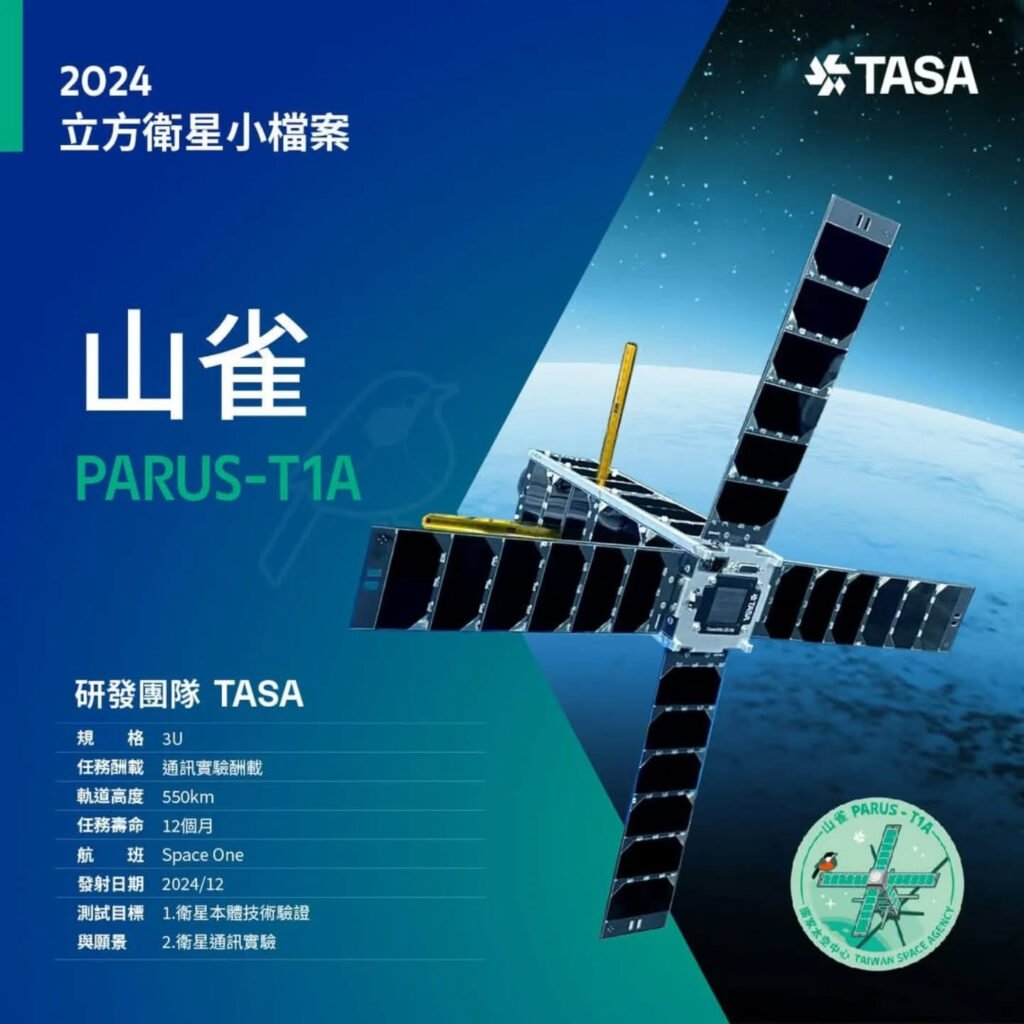
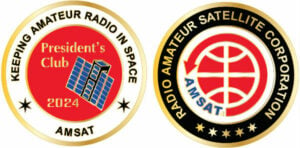
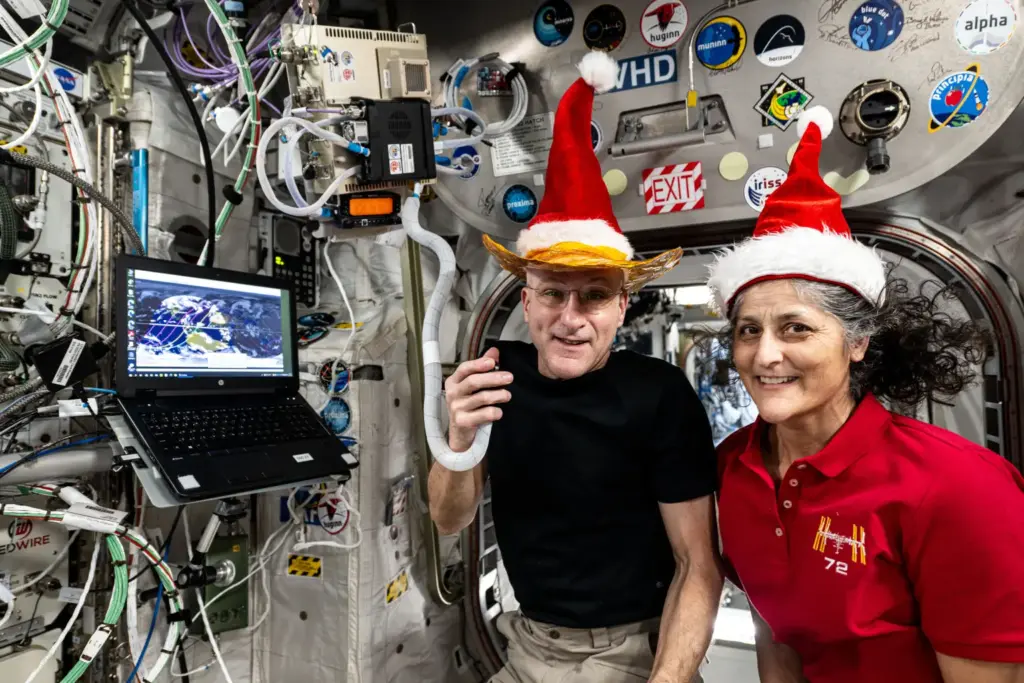 NASA shared a holiday snapshot of astronauts Don Pettit and Suni Williams on Dec. 17. [Credit: NASA Johnson]
NASA shared a holiday snapshot of astronauts Don Pettit and Suni Williams on Dec. 17. [Credit: NASA Johnson]
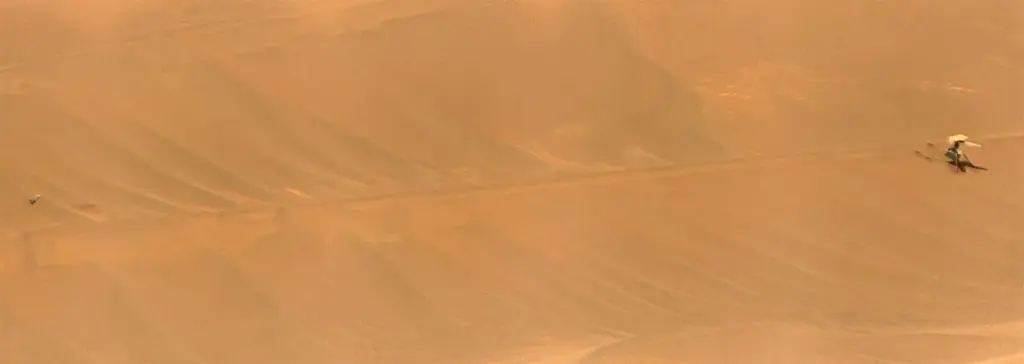 The wreckage of the Inguity Mars Helicopter as seen by the Mars Rover Perseverance. The helicopter is on the right and the broken rotor is approximately 49 feet away on the left. [Photo: NASA/JPL-Caltech/LANL/CNES/CNRS]
The wreckage of the Inguity Mars Helicopter as seen by the Mars Rover Perseverance. The helicopter is on the right and the broken rotor is approximately 49 feet away on the left. [Photo: NASA/JPL-Caltech/LANL/CNES/CNRS]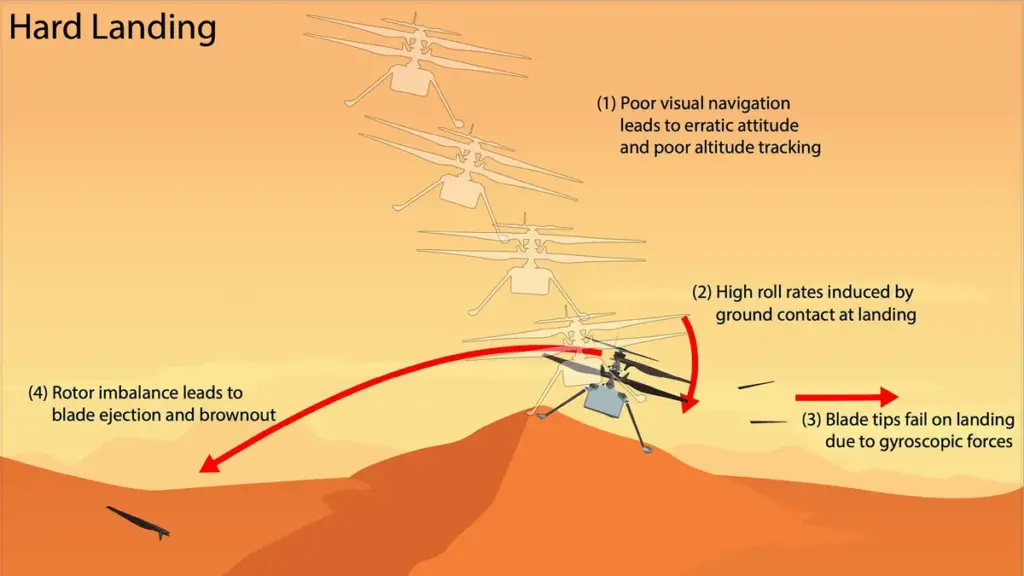
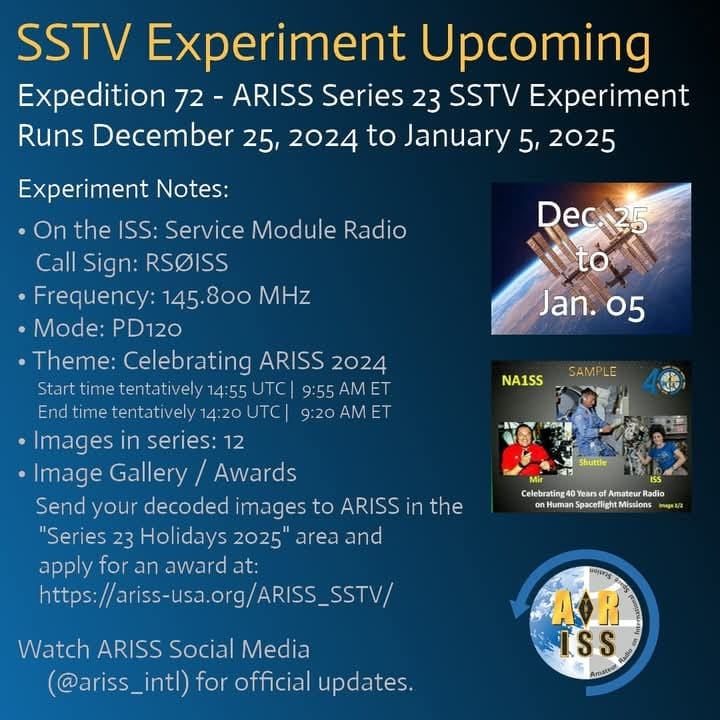
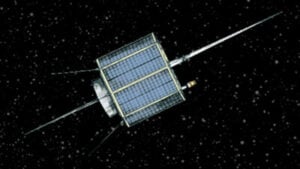 Artist rendering of AO-7
Artist rendering of AO-7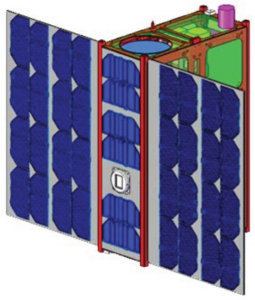
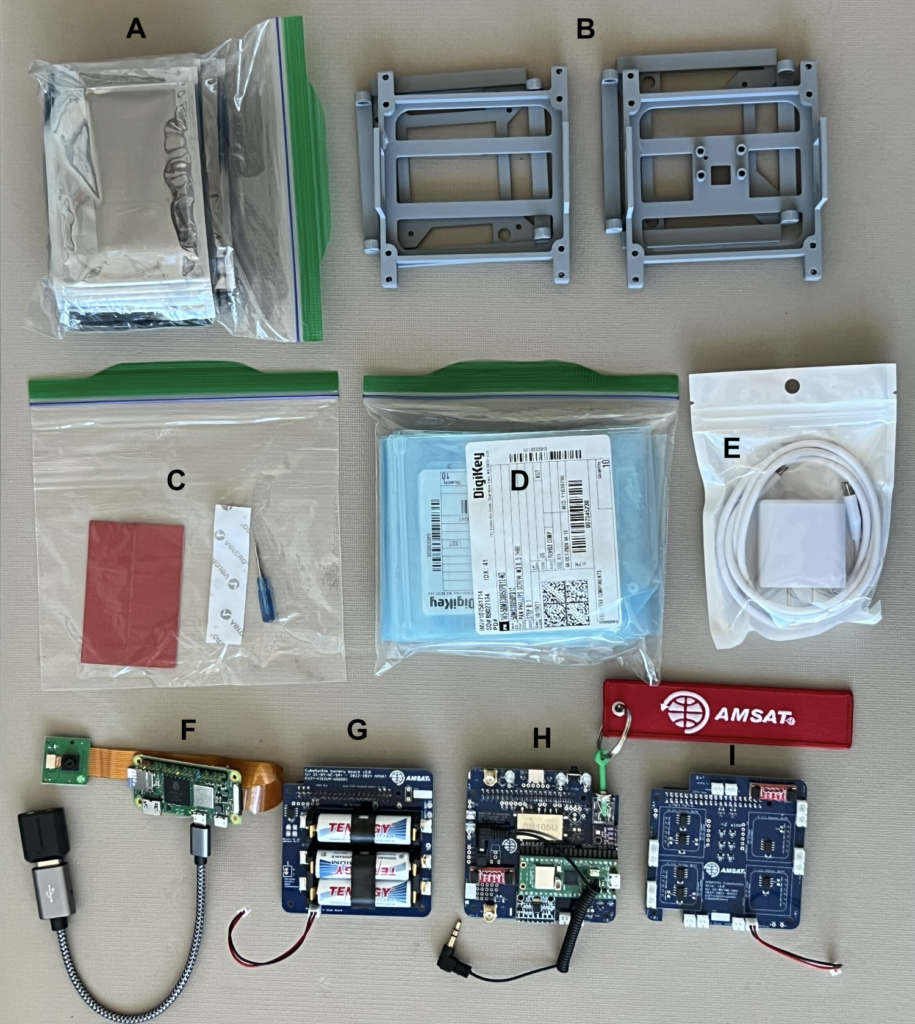 Limited quantities of the CubeSatSim Kit will soon be available for purchase from the AMSAT Store. [Credit: Alan Johnston, KU2Y]
Limited quantities of the CubeSatSim Kit will soon be available for purchase from the AMSAT Store. [Credit: Alan Johnston, KU2Y]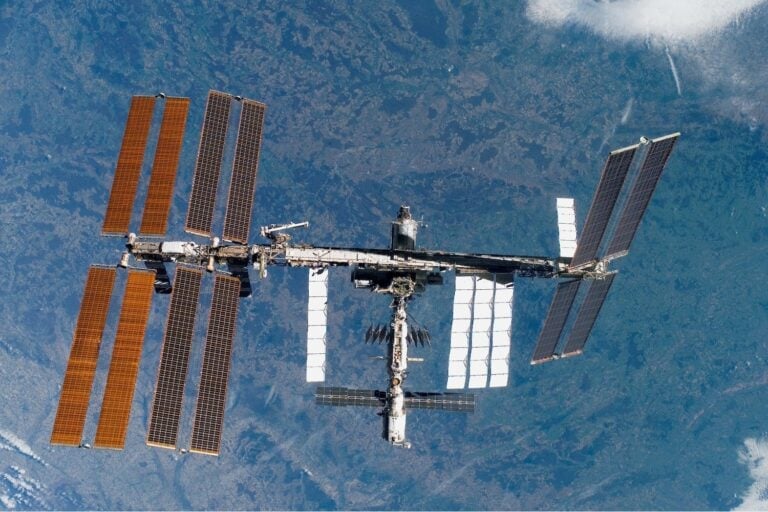 The ISS is set for retirement by 2030. [NASA photo]
The ISS is set for retirement by 2030. [NASA photo] Amateurs and others around the world may listen in on contacts between amateurs operating in schools and allowing students to interact with astronauts and cosmonauts aboard the International Space Station. The downlink frequency on which to listen is 145.800 MHz worldwide.
Amateurs and others around the world may listen in on contacts between amateurs operating in schools and allowing students to interact with astronauts and cosmonauts aboard the International Space Station. The downlink frequency on which to listen is 145.800 MHz worldwide.